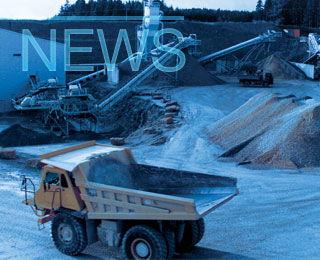The Alliance of Energy Intensive Industries has recently outlined its views to the European Commission regarding the strategic choices which need to be taken to ensure competitiveness and growth in Europe, CEMBUREAU has underlined.
All eyes are currently on the development of the next phase of the EU Emissions Trading Scheme (EU-ETSi), post-2020. As such, it is important that the voice of Europe’s energy-intensive industries (which includes sectors such as cement, steel and metals) is heard, the European cement association said.
In a position paper published at the end of this month, the Alliance underlines a number of proposals regarding the protection of industry against the risks of carbon leakage as well certain principles in relation to the free allocation of CO2 allowances. CEMBUREAU highlights that when it comes to carbon leakage, the message is clear: the revised EU-ETS must maintain a carbon leakage protection which is based on the same criteria and assumptions as those under the current phase of the EU-ETS (Phase III). Regarding the benchmarks themselves, these must remain both technically and economically achievable.
"It is crucial that the most efficient European installations operating in sectors which are at risk of carbon leakage do not see the level of protection afforded to them decrease as the result of a reduction in free allocation due to the cross-sectoral correction factor. Direct and indirect costs must be fully offset for the most efficient installations across the EU. If the cross-sectoral correction factor is maintained, the best performers will not be able to achieve the levels imposed due to economic, technical or thermodynamical limits, thereby turning the EU-ETS into a penalty system rather than one which incentivises investment. Companies will only be able to invest in innovative solutions in Europe if predictable and effective carbon leakage measures are guaranteed," CEMBUREAU said in a statement.
Another aspect which should be enhanced under the new proposal relates to measures which aim to tackle indirect carbon costs, the association adds. Under the current system, eligible sectors exposed to increases in the cost of electricity (resulting from the EU-ETS) only receive partial compensation from a limited number of Member States. This results in an uneven playing field across the EU, putting those installations which receive little or no compensation at a disadvantage. As such, the Alliance recommends that the new proposal contains measures to ensure that such indirect costs are fully offset for all installations at risk of carbon leakage. The Alliance has also provided some suggestions in terms of aligning the allocation methodology closer to real and recent production levels. This would provide several benefits, most notably preventing the over (or even under) allocation of free allowances.
The Alliance has submitted its views to the Commission via a questionnaire. "Nevertheless, the work does not stop here. An open dialogue will continue to be maintained in order to ensure that our views are heard throughout the process," the association concluded.
